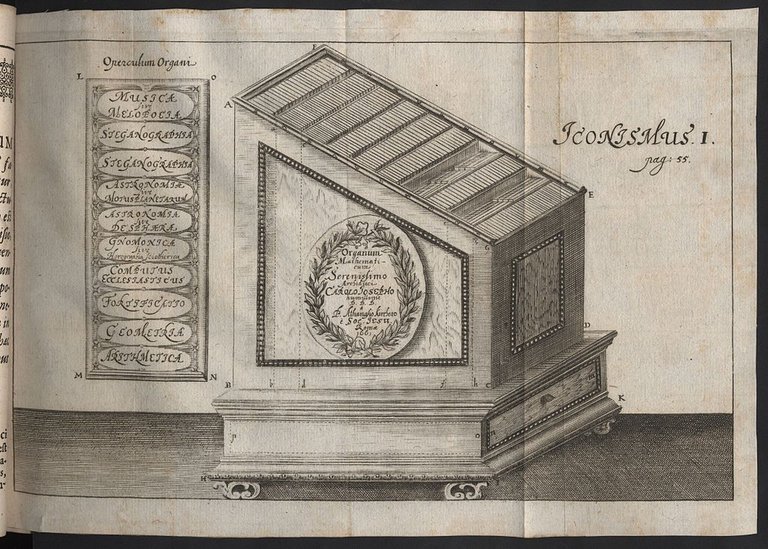Athanasius Kircher, do you know this scientist? I think that few will give an affirmative answer.
And, at one time, it was a very famous German scientist, enjoying great prestige.

He lived 78 (1602 - 1680), very saturated comprehensive activities, years. Wrote several scientific papers. Traveled a lot, went down on a rope in the mouth of an extinct volcano. He created a "Museum of rarities" in which unique tools, devices and artifacts were presented.

He was engaged in practically all directions of science of that time. Knew several languages, in including several "dead."
Kircher, being a deeply religious Catholic, was extremely versatile and was engaged in research in all fields of science. He wrote letters with questions from people from all over the world.
He left a lot of work on all sorts of topics. But, after his death, was very quickly forgotten. Mainly because almost all of his insights and research were recognized as incorrect from later scientists. In the future, all the hypotheses and conclusions Kircher, no longer be taken into account as incorrect. It's hard to say how insights Kircher was useless for science. I believe that his work is worthy of deeper study for its conclusions he did based on practical research and experiments. Although it was the imprint of the Catholic faith, but I think not all of it was wrong. I want to examine in more detail some of his famous deeds and works.
This Museum was opened in 1651 and was located at the Pontifical Gregorian University (also known as the Roman College). Until 1650 the future of the Museum exhibits were stored in the Cabinet Kircher , and then, when the place began not to suffice, has moved into a wing of the University. The Museum is constantly replenished with all sorts of exhibits that Kircher received as a gift from other scientists. But there were a lot of items and machines are found or made by scientists.
For example, a listening device.

Device for the hearing impaired:

The Museum kept Egyptian obelisks, was Etruscan collection, a unique library of different authors.
There was also stored a prototype of the current computing machines Organum Mathematicum (mathematical body).

This machine has done calculations in the field of arithmetic, cryptography and music. A copy of this device is now in the Galileo Museum in Florence.

Was presented all sorts of mechanisms and prototypes.

The Museum's collection covered almost everything that could be covered at that time. Exhibited archeological finds from all over the world where scientists got myself Kircher.

Stuffed animals from all corners of our planet were presented. The inhabitants of the seas:

And the inhabitants of the land:

Impressive telescope, the largest at the time.

Even there were samples of fossils of different mollusks.

Today it is difficult to imagine the scale of the Museum. Kircher himself proudly said that the Museum is a miniature reproduction of the entire Catholic universe.
The museums have on display some 300 experiments, through which Kircher attempted to show a picture of the Universe. Of course the way he saw her.
Unfortunately for today exhibits of the Museum are scattered on museums of Europe, and much any more doesn't exist.
There were only catalogs and descriptions of the exhibits.
But the Museum is a small fraction of what this scientist left behind. Many of his works have survived, and today they are dusting in the archives of libraries. And there you can see a lot of interesting things.
Will write about it another time.
Спасибо! С интересом прочла. Узнала много нового и увидела необычные экспонаты! Хороший пост @gildar
@singa рад что вам понравилось)